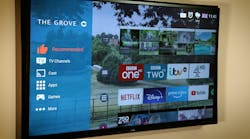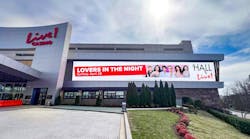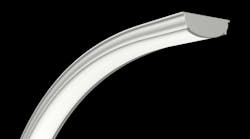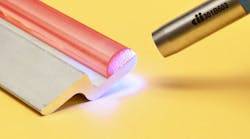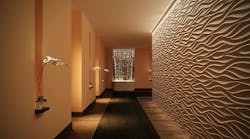Date Announced: 12 Oct 2011 Energy-efficient lighting manufacturer Precision-Paragon [P2] has released a comparison of energy-efficient LED and fluorescent lighting technologies.In the comparison [P2] — which manufactures both fluorescent and LED-based fixtures — examines the unique benefits of each technology, concluding that there is no ‘one size fits all’ solution."Many people assume that LED lighting is the most efficient lighting technology, but the truth is more complicated than that," said Joe Martin, vice president and general manager.[P2]'s technology comparison shows that there are some situations where fluorescent lighting can be a more energy-efficient and affordable lighting option, while other situations can use the unique qualities of LED lighting to make it the better option.The comparison starts by examining a common home-lighting requirement, replacing an incandescent 60W light bulb with an energy-efficient LED or Compact Fluorescent (CFL) replacement.In this situation, both technologies offer nearly identical energy-efficiency and lighting performance.The differences between the two technologies begin in the price of the bulbs themselves. The CFL bulb used in the comparison costs just $0.86 per bulb, while the LED equivalent costs $45 for a single bulb.However, the comparison noted that the LED bulb is expected to last three times longer than the CFL bulb.The home lighting comparison therefore concludes that if saving money is the objective, the CFL bulb would be a better option in most situations. However, if the bulb is placed in an inaccessible or difficult to change location, the LED bulb's longer lifespan could give it a notable advantage.After addressing home lighting, the comparison moves on to higher wattage lighting, the type of lighting often found in commercial and industrial spaces.For this application, the comparison looked at energy-efficient replacement options for a 250W metal-halide fixture in a parking-garage.Two closely-matched fixtures manufactured by [P2] are compared; the QPD LED-based fixture and the SIH fluorescent-based fixture. In terms of cost, the LED-based QPD is currently approximately six times more expensive than the fluorescent-based SIH - pricing that reflects averages across the industry.In terms of pure efficiency, the fluorescent-based fixture is the winner in this comparison. It produces 90 lumens of light per watt of electricity, compared to the LED-based fixture's 79 lumens per watt."For many people, this is the most surprising part of our comparison," said Martin. "Most people outside of the industry don't know that fluorescent lighting can still be, in many situations, the more efficient choice."Martin went on to explain that while LED lighting has seen rapid advances over the past few years, fluorescent lighting technology has been steadily improving in both quality and efficiency for more than 20 years.The comparison goes on to note some specific advantages of LED-based fixtures. One such advantage is the ability of LED-based fixtures to distribute light more evenly than other lighting technologies.In situations like a parking garage that requires a specific minimum light-level distributed evenly through the entire structure, that light level could be achieved with lower-wattage LED fixtures than an equivalent fluorescent lighting system, since fluorescent lights tend to “puddle” light.The comparison also notes that LED lighting technology has unique benefits in cold environments that can increase a fixture's efficiency by operating with occupancy sensors - something that fluorescent-fixtures are ill-suited to.The comparison concludes that in some situations, the features of LED-based fixtures might add enough efficiency to a system to overcome the disadvantage created by their initial cost. In other situations, fluorescent fixtures will still be the more affordable, more efficient choice."Our comparison shows that it's not simply a question of which technology is better," said Martin. "It's a question of which technology is the best option for a specific project when you consider your energy, lighting and financial goals.The entire comparison is available on [P2]'s blog at: http://www.p-2.com/helpful-information/blog/370-is-led-the-most-efficient-lighting-technology/
Contact
Lou Preston National Marketing Director (714) 386-5550
E-mail:[email protected]
Web Site:www.p-2.com/helpful-information/blog/370-is-led-the-most-efficient-lighting-technology/


